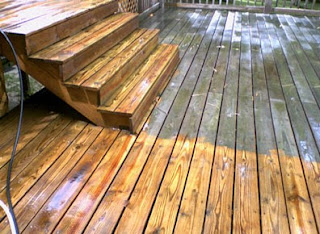1. Dangerous Grill
Placement
A charcoal grill
next to combustibles (say, a wooden deck rail or low-hanging tree branches) is
a leading cause of BBQ fires, according to the National Fire Protection
Association.
EASY FIX : Always make sure to leave a 10-foot
clearing between your grill and deck rails, the side of the house, and
overhanging plants, says David Markenson, MD, chairman of the American Red
Cross Advisory Council on First Aid and Safety.
2. Toxic Plants
More than 68,000 people
a year are poisoned by plants, reports the American Association of Poison
Control Centers. Most end up with nothing worse than an upset stomach or an
itchy skin rash. However, some plants can be fatal, especially to pets and
small children.
EASY FIX : Do your homework before choosi
ng
backyard vegetation, says Amy Stewart, author of Flower Confidential: The Good,
the Bad, and the Beautiful in the Business of Flowers. A few common plants
require caution: Oleander, datura (also called jimson weed), and castor bean
are all dangerous if swallowed. For a complete list of toxic plants, check out
prevention.com/links.
Even the smallest
amount of standing water can give mosquitoes a hospitable place to multiply,
which raises your risk of bites — and infections such as West Nile virus.
"I've seen mosquitoes breeding in a soda bottle cap," says Joseph
Conlon, technical advisor for the American Mosquito Control Association.
EASY FIX : Do a weekly check of buckets and
plastic covers and dump any water to keep pests away. Also change the water in
birdbaths and fountains.
4. Not-Quite-Extinguished Charcoal
Charcoal may feel
cool to the touch, but if you throw away coals while the insides are hot, you
risk starting a fire.
EASY FIX : When you've finished grilling dinner,
soak coals with cold water and then place them in a noncombustible metal can
for safe disposal. Keep the can on a nonflammable surface, such as the driveway
or a cement patio.
5. An Unfenced Pool
According to the
Home Safety Council, nearly a quarter of all drownings in the United States
happen near home. Even if your kids are older, consider this: Easy access to
your pool may lure neighborhood children or pets into the water when you're not
around.
EASY FIX : Whether your pool is built in or
above ground, install a four-sided fence that is at least 5 feet high, with a
self-latching gate. Don't use the house as one side of the fence, because an
open door provides an easy entry, and never place patio furniture close enough
to the fence that it could be used to scale the barrier.
6.
Pesticide Residue
Homeowners often
use too many pesticides — conventional or natural — or apply them incorrectly,
says Jennifer Sass, PhD, a senior scientist with the Natural Resources Defense
Council. This not only wastes money but, in extreme cases, allows chemical
levels to get high enough to cause flu like symptoms, she adds.
EASY FIX : Cut down on pests naturally by
attracting birds and insects that eat the bugs that are attacking your prized
roses. Install a birdhouse designed for bluebirds, which feed on insects ($23;
backyardbird.com). Or grow plants — such as those in the parsley and sunflower
families — that attract predatory insects such as assassin bugs and parasitic
wasps. Despite their ominous-sounding names, these critters do your garden
good; predatory insects don't hurt plants or people but destroy the bugs that
do. Growing plants native to your region, which are less susceptible to
infestation, can help, too, advises Kimberly Rider, author of The Healthy Home
Workbook.
7. A Weather-Worn Deck
If you don't
waterproof your deck every 2 to 3 years, moisture can seep in and warp the
wood, upping your risk of falls.
 EASY
EASY
Question: Jimmie, could you address the best process for bringing
houseplants from the patio back into the house before the cold weather sets
in? we moved to Prosper end of May, some pothos plants (and couple of
others) were put outside until finding the right place for them, but they were
doing so well (and still undecided about where to put them), they are still out
there. But...I'm afraid bringing them in they will also be harboring
many of the creatures we've seen in our yard/patio...grasshoppers, spiders,
ants.
Do I take them out of the pot,
remove the dirt and repot with fresh dirt after rinsing the leaves/stems off
with water, do I apply a product...? Enjoy your column and look forward to
hearing from you. Rebecca T. in Prosper
Answer: Hi Rebecca, welcome to Prosper! I see you and your plants
are still acclimating.
Your best and easiest solution for
your concerns are to simply spray "Neem Oil" or an "Insecticidal
soap" on your plants before bring them in for the winter. Most of these
type of products also offer a Organic alternative but those usually require
more treatments before bringing plants inside where as the Neem Oil is one shot
and your done.
Before placing plants in a more
permanent location (perhaps in the spring) that would be the correct time to
remove and replace soil into larger container for future root growth etc..
Until next time...Happy Gardening!! Visit our new website at www.absolutelybushedlandscaping.com

No comments:
Post a Comment